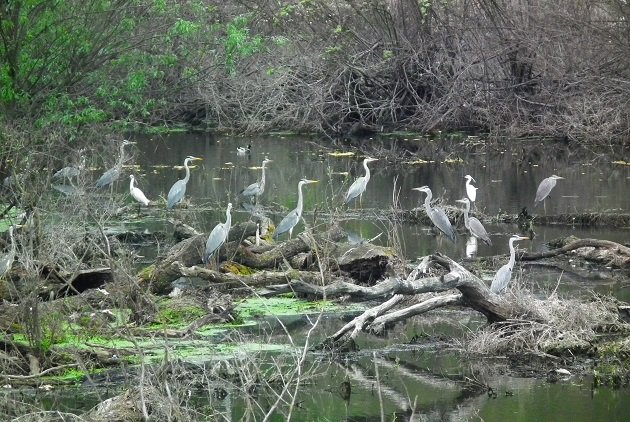
Is Belgrade the New Berlin is a question recently raised in Vogue by Marry Holland. Her article starts with a bold claim that “no city makes you feel more like a New Yorker than Belgrade.” While I am a Belgrader, I have no clue why someone in the New Berlin should feel like a New Yorker (what, do New Yorkers feel like Berliners?) and am not a lifestyle writer to comment on those claims.
I am a birder and I can claim that out of Serbia’s total of 350+ bird species, highly urbanised inner city areas of Belgrade hold almost 100 birds, while the outskirts have more than 200 species. The question is, where to see them?
I have written about this topic several times and always choose some of my favourite sites to recommend. This time I will be more objective and let the local eBirders and their activity choose the hotspots instead.
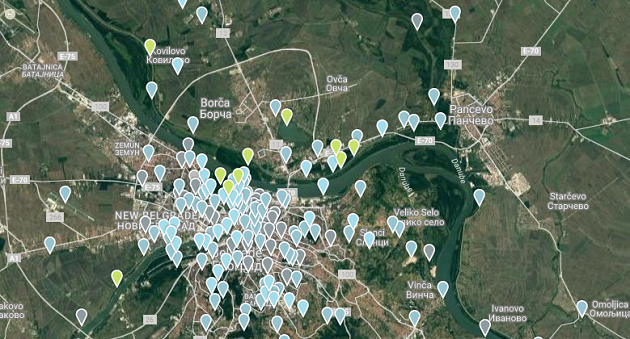
eBird says that, at the time of writing (April 2017), there are some ten hotspots that have crossed the 100 bird species mark. But, if you check the hotspot map of Belgrade, you will notice three single green hotspots and, along the Danube, two clusters with 3 and 4 green hotspots. So, instead of writing about 10, I will shorten the where-to-watch list to the eTop-5 (+1). Here they go:
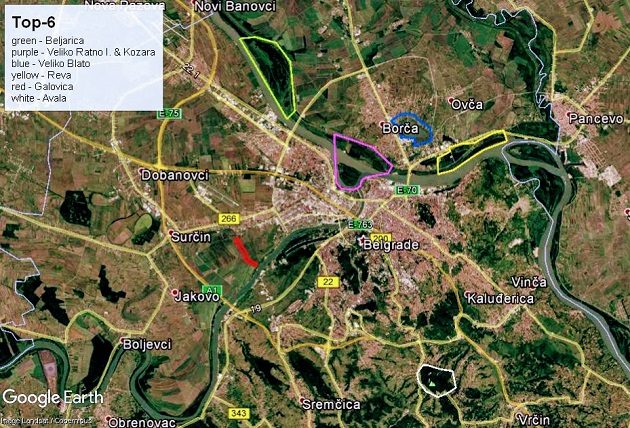
5. The smallest of Belgrade’s most productive sites, the Galovica canal offers more than 100 birds. It flows from the western suburb of Surcin through arable fields reaching the Sava river SW of New Belgrade. There are walking paths on both sides of the canal, with bridges at 1.3 km / 0.8 mi and 2.5 km / 1.6 mi from the Sava river embankment.
Best birds: Eurasian Marsh, Hen and Montagu’s Harriers; Northern Lapwing, Ruff; Green and Wood Sandpipers, Common Kingfisher, Red-backed and Great Grey Shrikes, Eurasian Golden Oriole, Tree Pipit, Yellowhammer, Reed Bunting.
Getting there: City bus 95 and 94. In order to reach Galovica, one has to walk or drive 3.5 km / 2 mi from New Belgrade along the embankment.
4. The Veliko Blato lake has more than 100 eRecorded bird species and lies in the suburb of Krnjaca, on the northern bank of the Danube. It is a large, shallow lake surrounded by reedbeds, offering a circular walk of 6 km / 3.5 mi. The lake is a private property, run by the Mika Alas fish farm company and visitors must ask for permission in advance (management contacts).
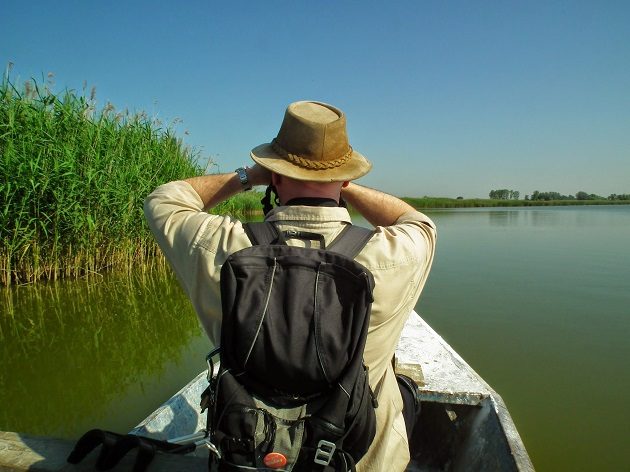
Best birds: Common Shelduck, Garganey, Ferruginous Duck, Little Bittern, White-tailed Eagle, Black and Whiskered Terns, Eurasian Penduline Tit, Bearded Reedling, Savi’s Warbler, Common Reed Bunting. At the southeast part of the lake is a breeding colony of Black-crowned Night, Purple and Squacco Herons.
Getting there: City buses 95, 96 and 104; after the Sebeski Canal bus stop, there are 1.6 km / 1 mi to the fish farm entrance.
Status: The youngest nature reserve in the city
3. With more than 130 bird species recorded here in the last few years (cover photo), the Beljarica backwaters (a.k.a. Crvenka, not to be mistaken for the namesake settlement further downriver) consists of 900 ha / 2,200 ac of river branches, ponds, willow and poplar forests with oak and ash stands, as well as large hybrid black poplar plantations. When the water levels are low, it is possible to explore it on foot, but local birders mostly walk along almost 6 km / 3.5 mi of embankment overlooking the wetlands.
Best birds: Black Stork, White-tailed Eagle, Black-winged Stilt, Green and Wood Sandpipers, Ruff, Spotted Redshank, Common Greenshank, Dunlin, Little Stint; Common Kingfisher, Common Hoopoe, European Bee-eater, Wood and Willow Warbler and the Common Chiffchaff.
Getting there: Either on foot over the Pupin Bridge from Zemun (reachable by bus 85, 17 and 73), or from the suburb of Kovilovo, reachable by bus 106 (there are additional 4.5 km / 3 mi of asphalt road before one reaches the embankment).
Status: Proposed for protection, but threatened by plans for a large scale development.
2. The Reva lake and the Danube backwaters along it are a complex of three 100+ hotspots adding to a 141 bird eRecorded here (in 479 eBird checklists so far). This area consists of the reed-fringed Reva lake proper (as observed from the bridge crossing it) and about 6 km / 3.5 mi of grassy embankment with a view of the backwaters. Habitats are similar to Beljarica.
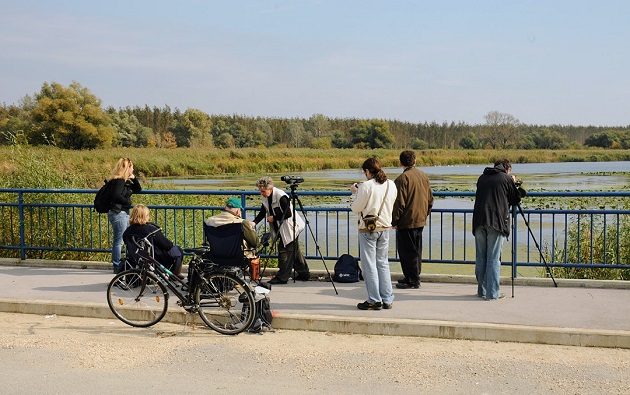
Best birds: Garganey, Ferruginous Duck, Little Bittern, Squacco and Night Herons, White-tailed Eagle, Whiskered Tern, Eurasian Hobby, Red-backed and Lesser Grey Shrikes, Eurasian Penduline Tit.
Getting there: Get off the bus 108 at the stop called the Oil Refinery and follow the dirt road left of the blue Jeep Commerce building until you reach the bridge over the Reva lake. A few hundred metres further, you may also reach the embankment and check the Danube backwaters for several kilometres.
Status: Threatened by ongoing construction works (e.g. no one has reported any more otter sightings since the construction started last year).
1. The Veliko Ratno Island in the middle of the confluence of the Sava and the Danube rivers, together with the Kozara backwaters at the northern bank is a complex cluster of four 100+ hotspots, followed by the next four hotspots. Summed together, there are 177 bird species eRecorded so far at those hotspots (in 1,186 checklists). What makes this area so complex is the issue of getting there. Access is not restricted, but the area stretches over two islands, surrounding waters and three banks of two rivers, so for practical reasons, it should be treated as four areas. Habitats are similar to Beljarica.
Best birds: In winter Scaup, Velvet Scoter, Smew and Black-throated Diver; Pygmy Cormorant, Black-crowned Night Heron; Icterine and Wood Warblers. For the White-tailed Eagles nest cam on the island, search the YouTube for “Orao Belorepan Veliko Ratno Ostrvo 2017”.
Getting there: To Usce Park, 84 and 15; to Dorcol Promenade, city buses 79 and 24 (overlooking the rivers, both sites are at their best in winter); to Kozara, city bus 104 (best in spring). Veliko Ratno Island can be reached either by boat taking sunbathers to the Lido beach or, in summer, by pontoon bridge (best in spring).
Status: Veliko Ratno Island is a protected nature reserve, while Kozara is proposed for protection.
+
6. The sixth area doesn’t quite reach the 100 birds mark on its own. I am talking of the 511 m / 1700 ft high Avala mountain, some 15 km south of the city. Four eBird hotspots located at the top and the slopes of the mountain have listed 85 species so far, but without any waterbirds, this is impressive in its own right. If we add the birds of arable fields surrounding the mountain (Beli Potok), its checklist goes to 101. With different habitats – at lover altitude hornbeam and maple, oak on southern slopes; at higher altitude beech, at northern slopes planted conifers – this place offers somewhat different set of birds and is well worth a mention.
Best birds: Woodcock (very hard to see), Tawny Owl, 6 species of woodpeckers including Middle Spotted, Gray-headed (rare) and Black; Goldcrest, Short-toed Treecreeper; in winter joined by Firecrest and Bullfinch.
Getting there: City buses 401, 403, 405, 407 and 408.
Status: Nature reserve













Hope I can make use of this guide in Belgrade some day. Some really good urban birding!